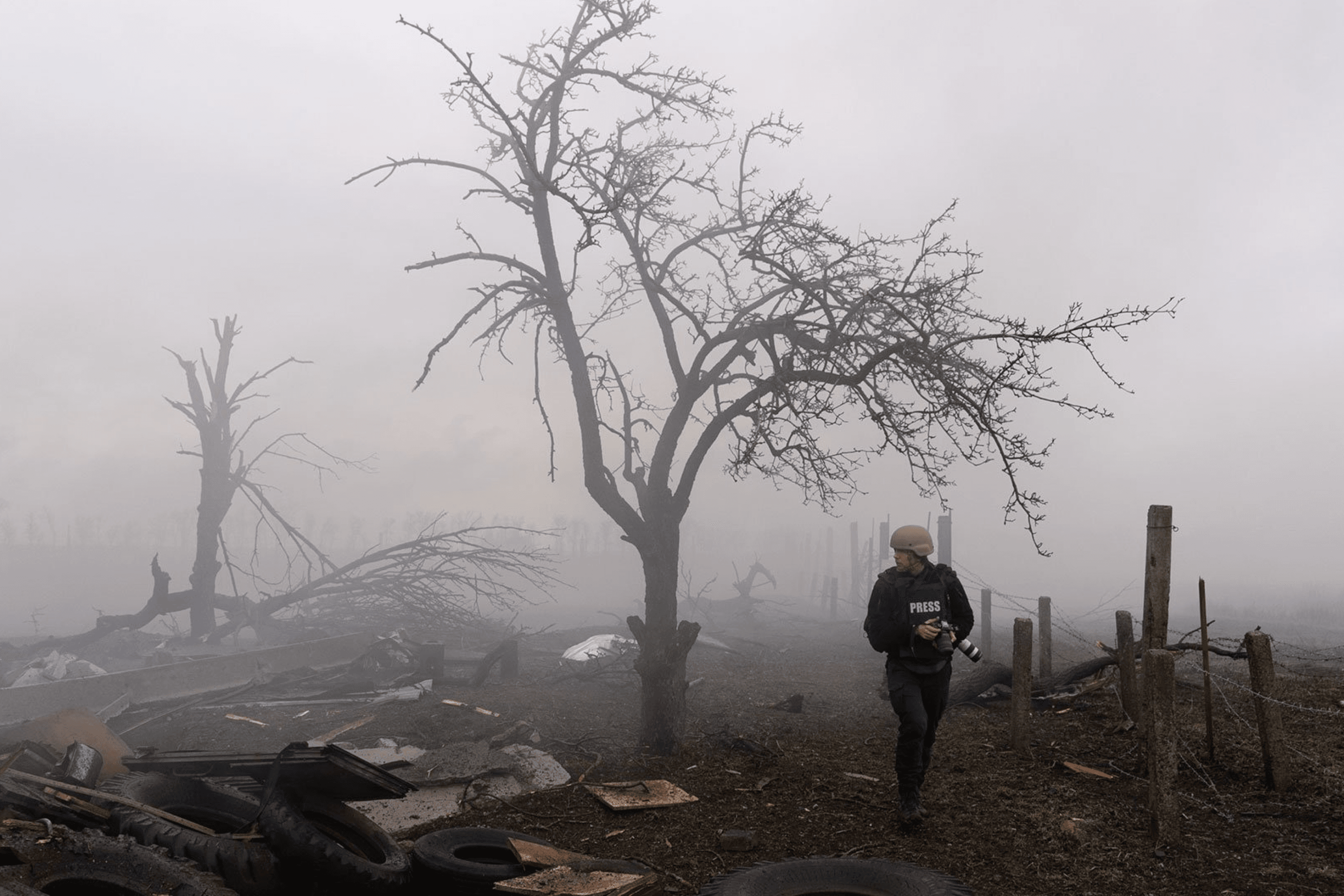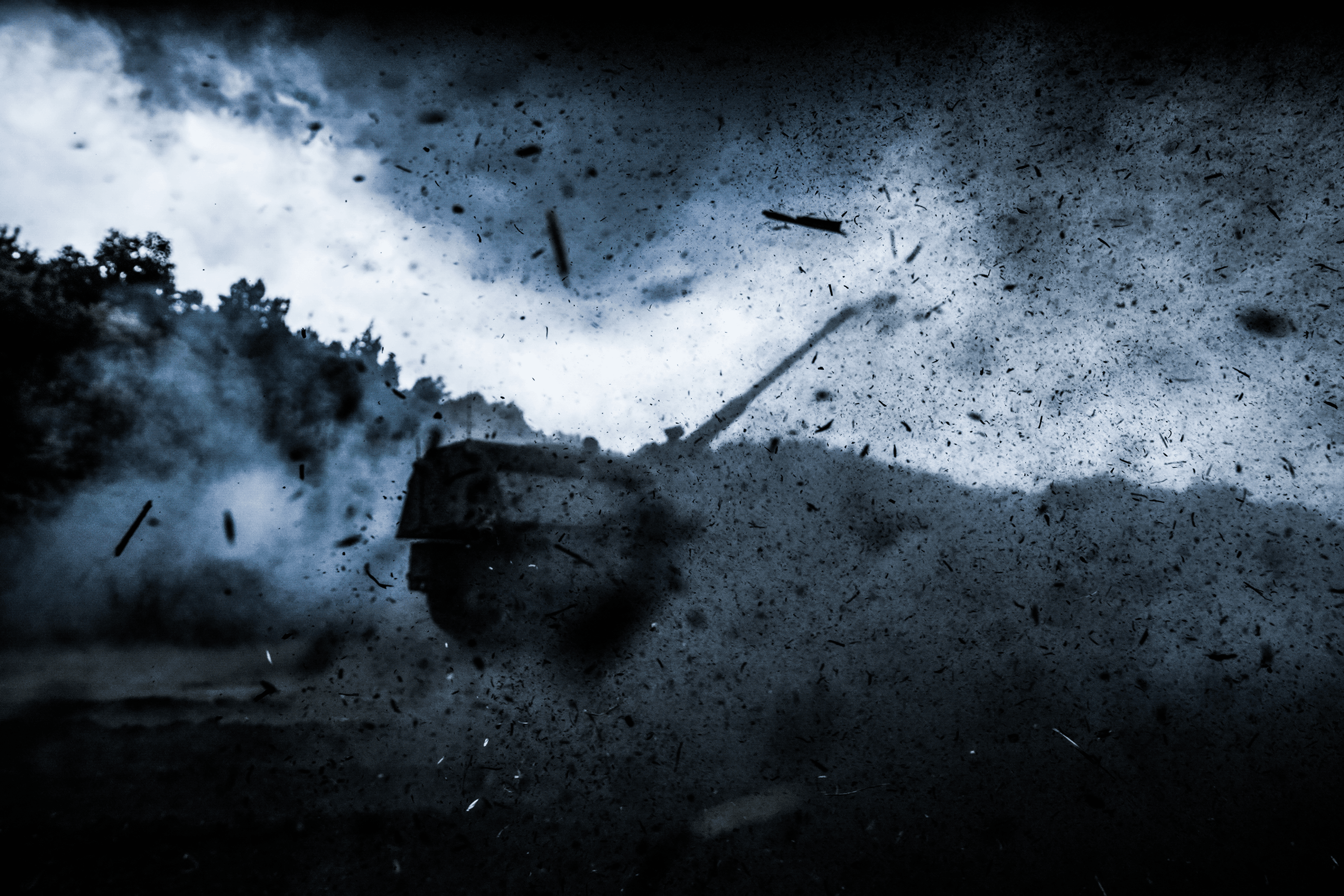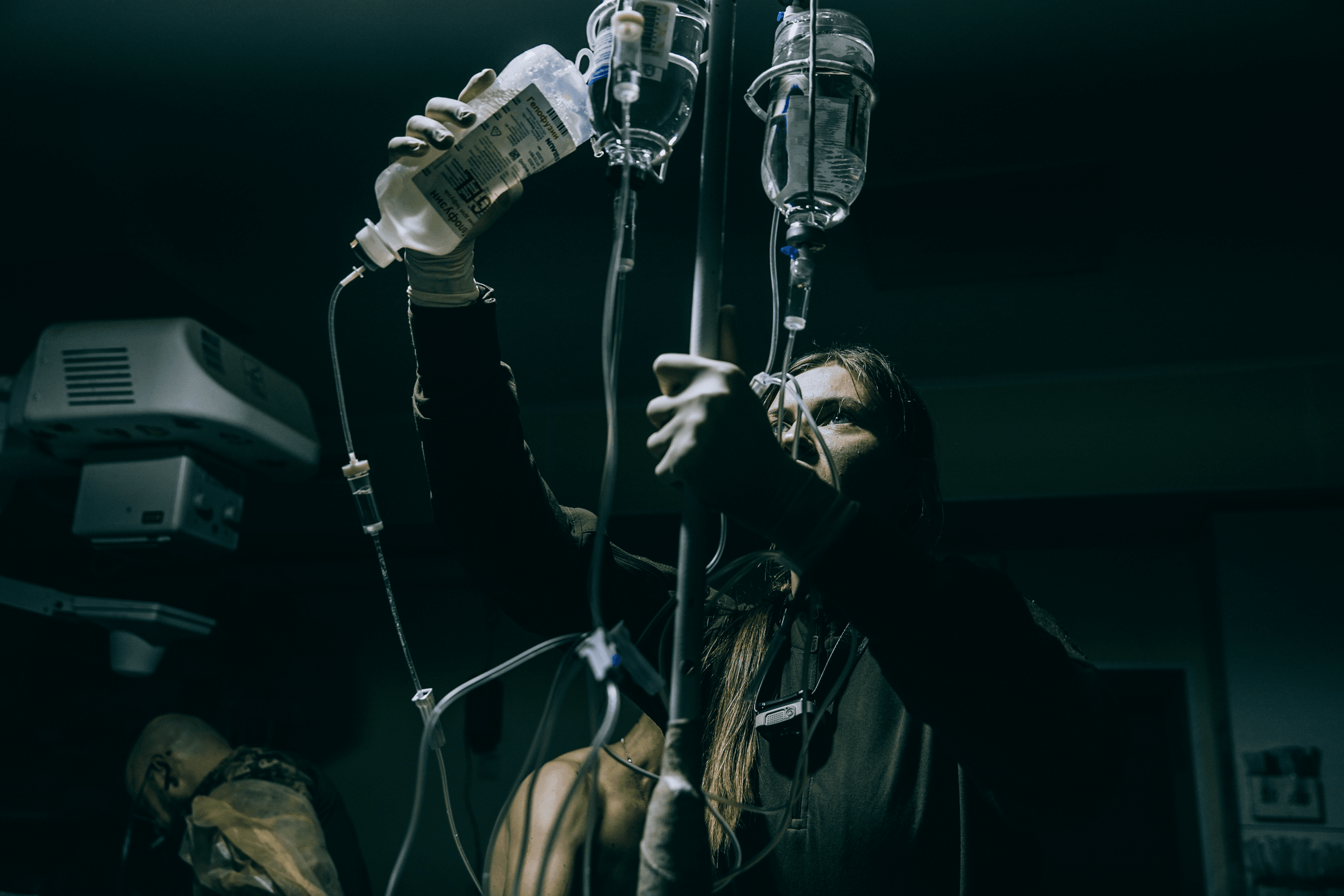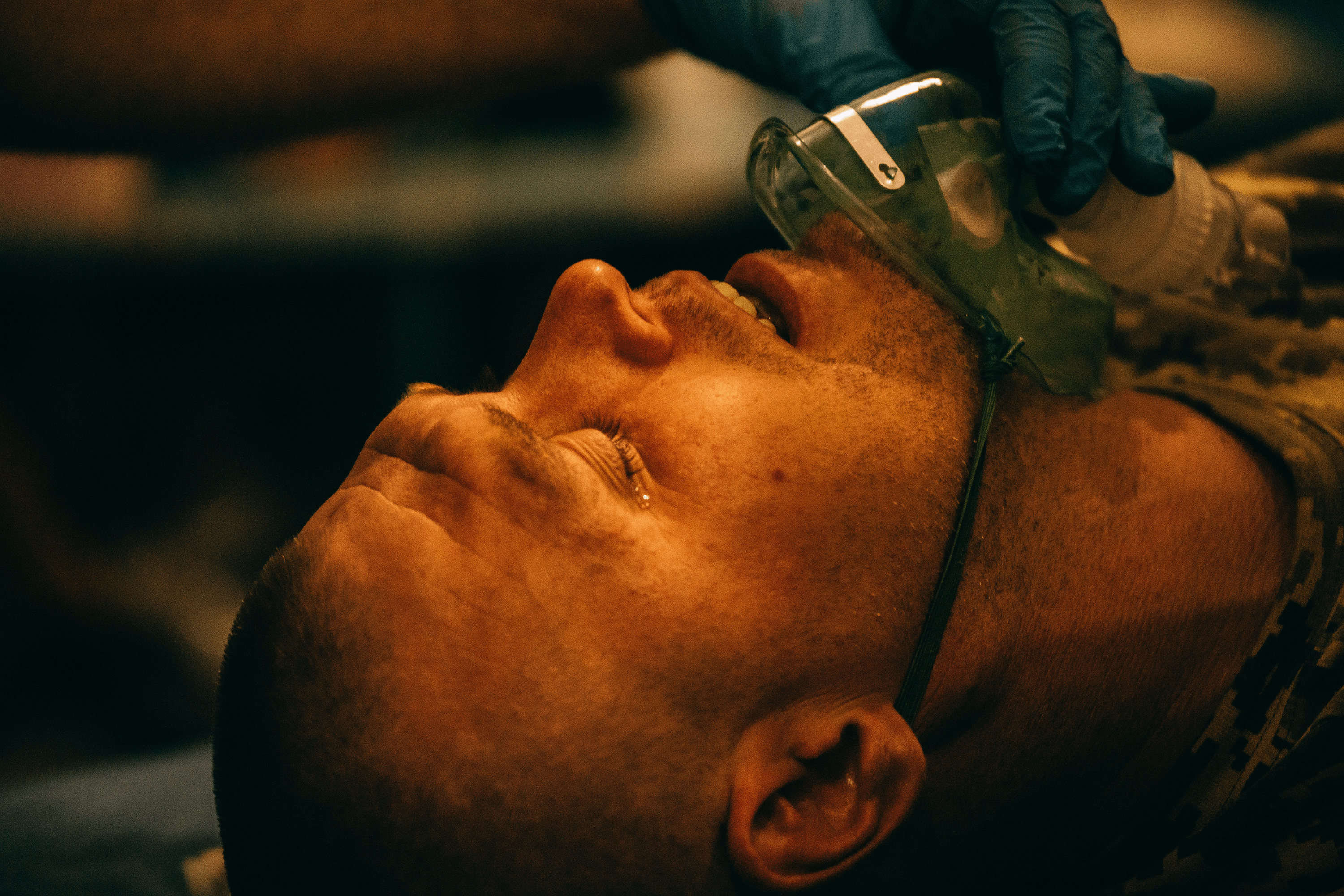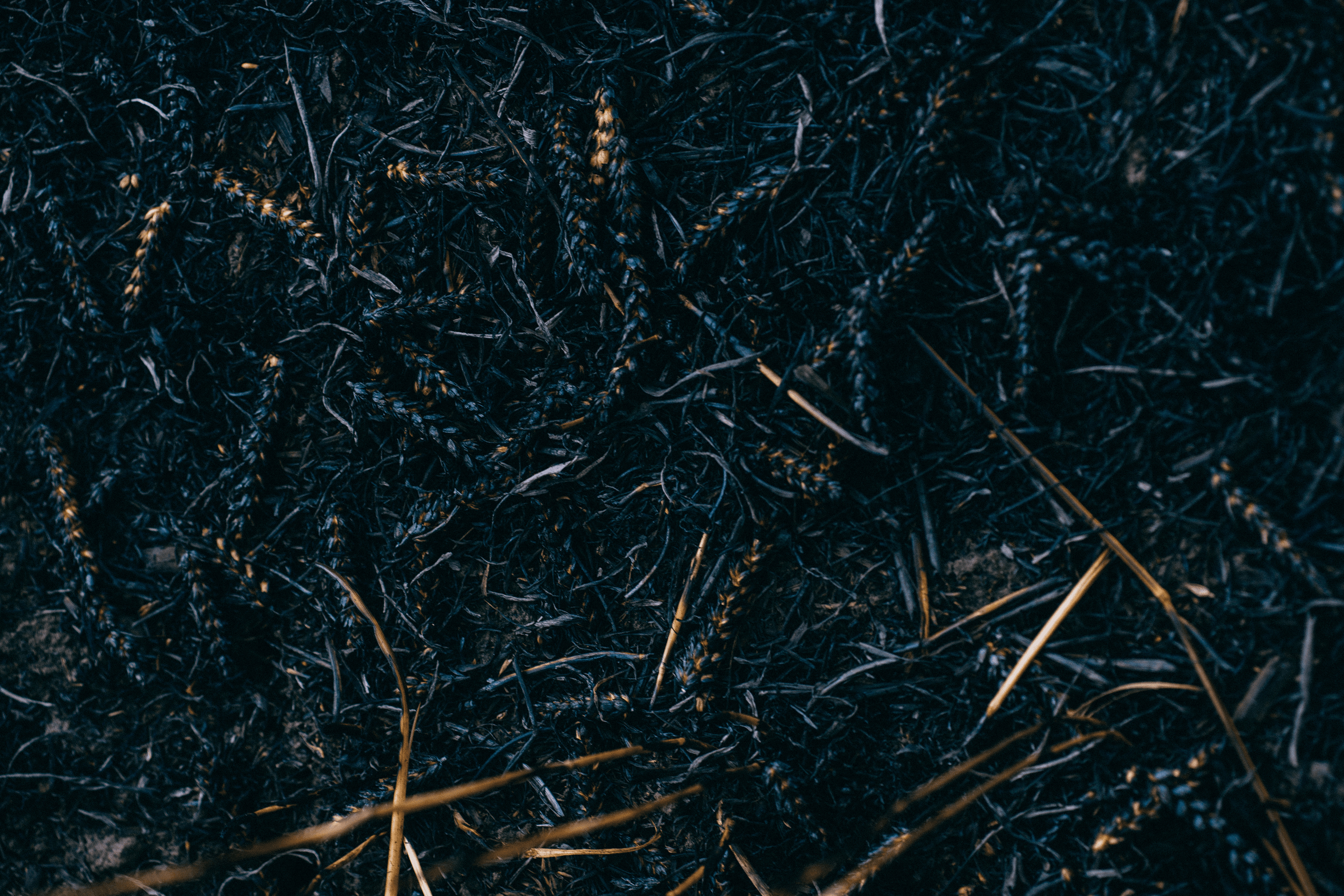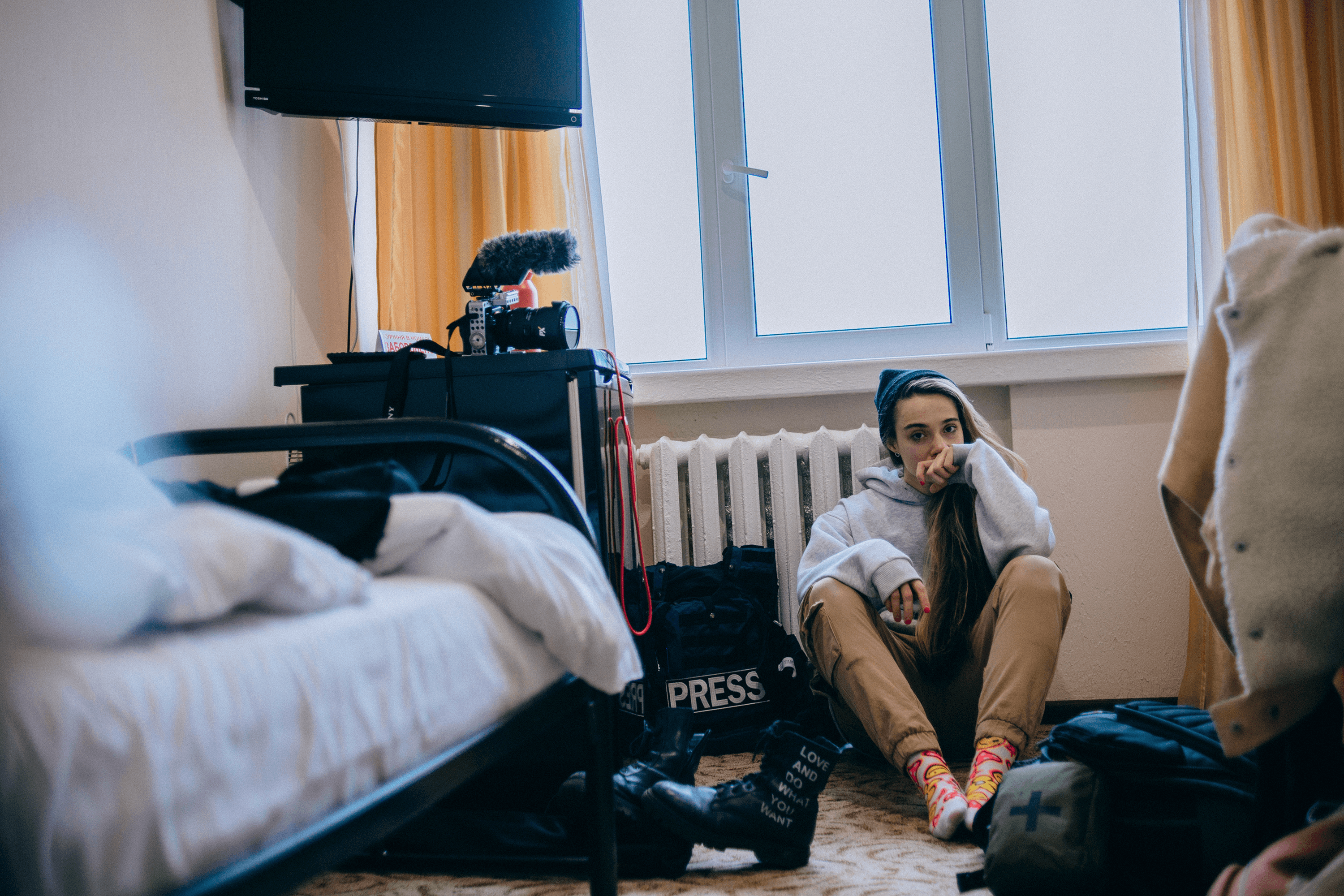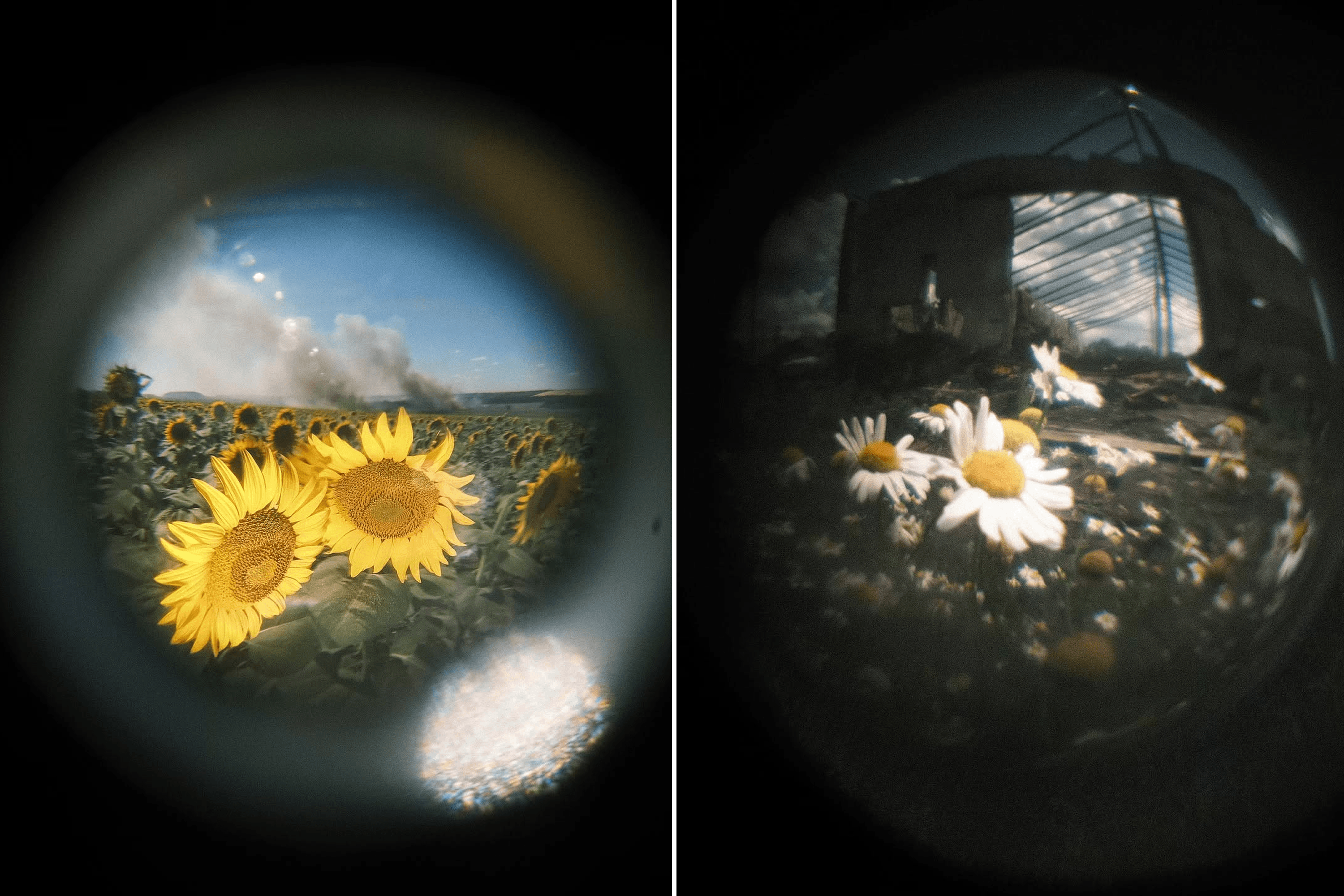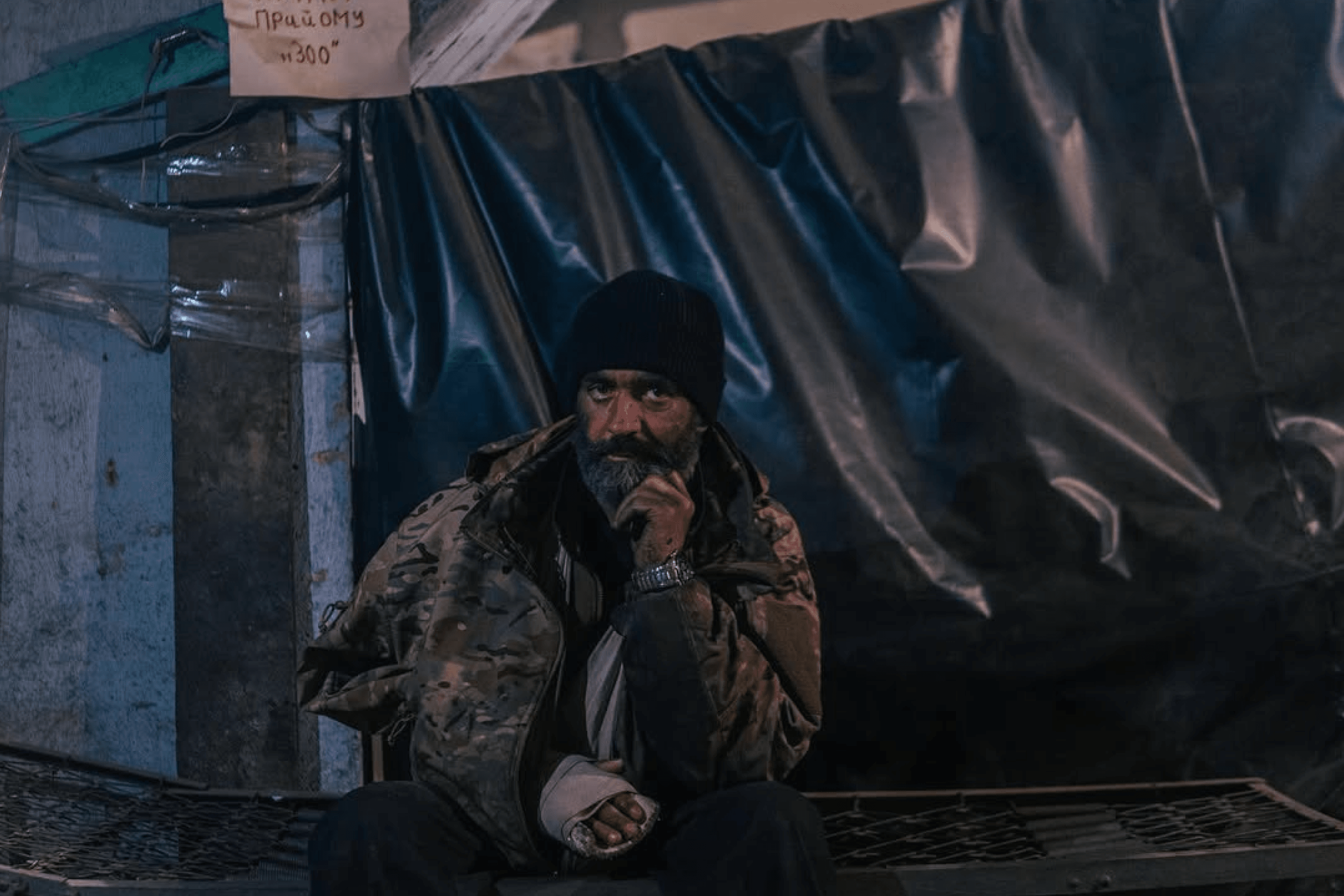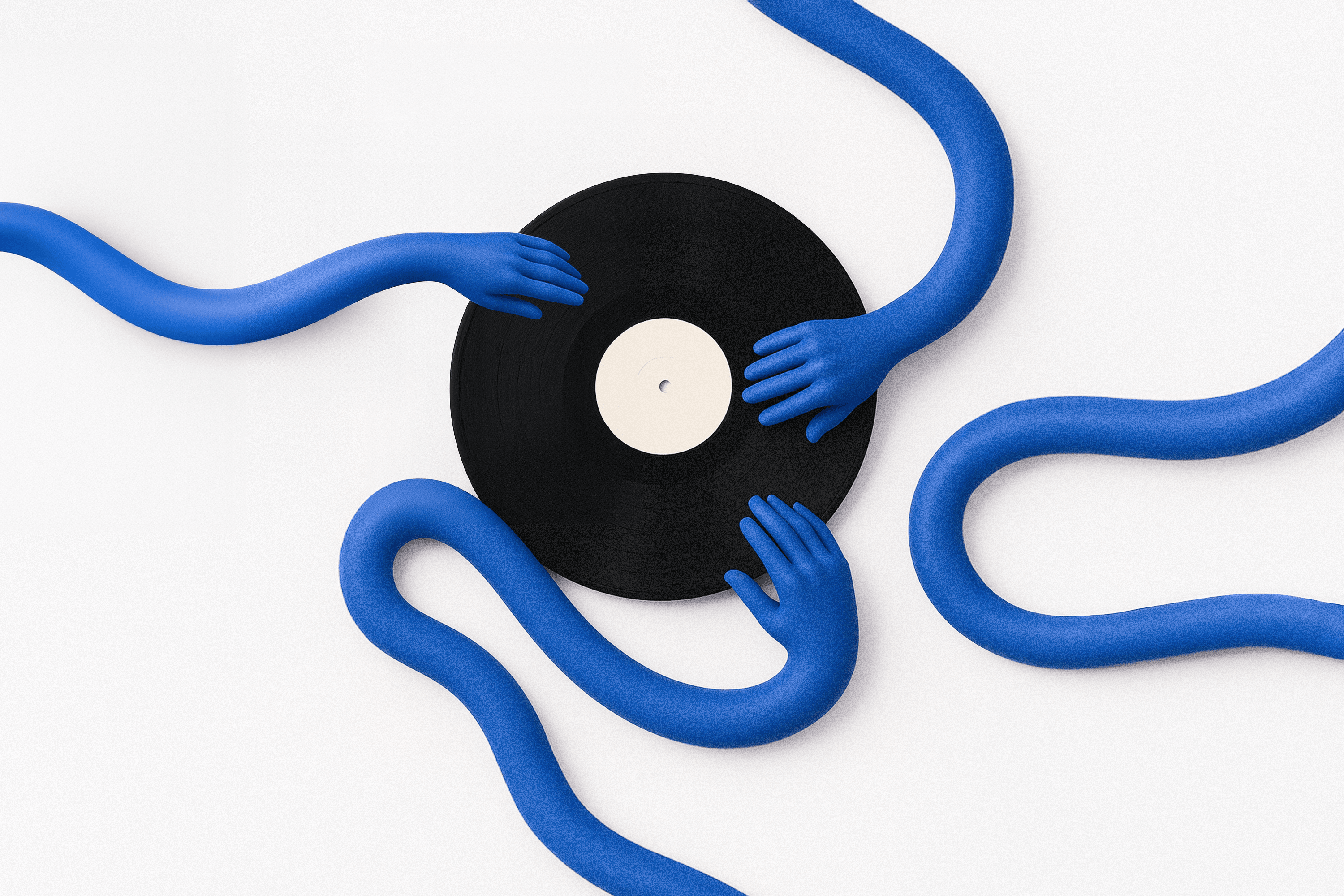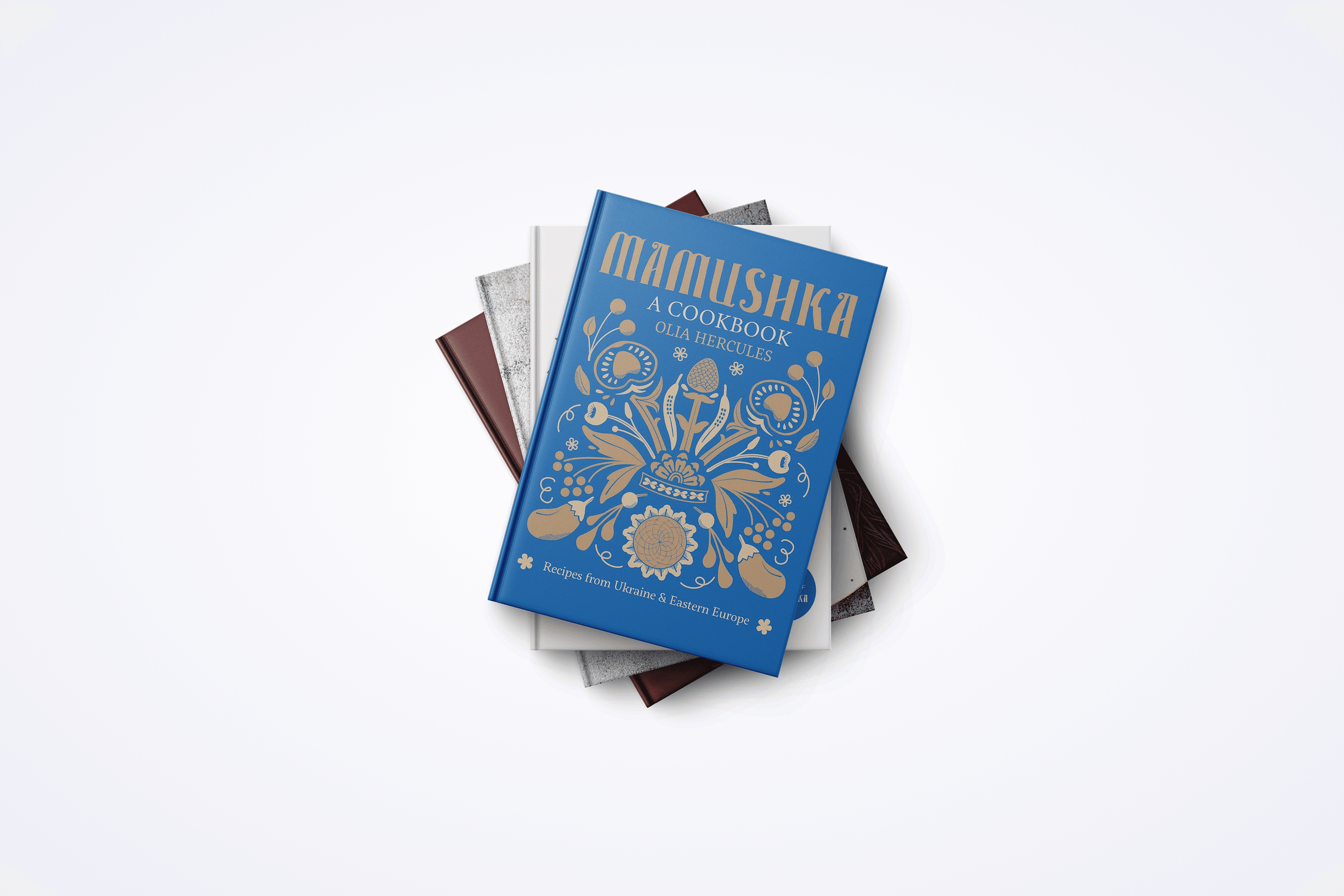Since the start of Russia’s full-scale invasion of Ukraine, the world has been shaken by images captured by Ukrainian photographers documenting the war. Their work appears in major global media outlets, features in international exhibitions, and earns some of the world’s most prestigious awards and honours.
These photographers are talented documentarians and artists, each telling the story of the war in Ukraine through their own distinctive lens and creative style. They often risk their lives, health, and freedom to record what is truly happening — and to show that reality to the world.
For instance, documentarians Yevheniy Maloletka and Mstyslav Chernov managed to take out terabytes of photos and videos exposing Russian war crimes out of occupied and nearly destroyed Mariupol. They hid the material and carried it through dozens of Russian checkpoints — a journey that could easily have cost them their lives. It was ultimately thanks to their work that the world saw what Russia had done to Mariupol, and Chernov and Maloletka received the Pulitzer Prize along with many other international awards.
Yellow Blue Business Platform has compiled a selection of well-known Ukrainian photographers who regularly share images sure to leave a strong impression. Among them are documentary photographers who show the horrors of war from the hottest front-line zones, and art photographers who reinterpret the war and social processes through the lens of artistic expression. The list is by no means exhaustive — here, we highlight just 12 of them.
Documentary photographers
Julia Kochetova
A director and photojournalist who has been documenting human stories from the most intense front-line zones since 2014. Her photographs have been shown in exhibitions in Ukraine, the United States, the United Kingdom, and Serbia, and are published by leading international media outlets.
In 2016, Kochetova released her first documentary film, See You Soon, about the war in Donbas. In 2022, she co-authored the documentary series Wind from the Mountains, which tells the stories of Crimean Tatars after Russia’s annexation of Crimea. The series seeks to draw global attention to occupied Crimea and highlight the importance of supporting political prisoners — one of its protagonists is Mumine Salieva, the wife of civic activist and political prisoner Seyran Saliev — as well as preserving the history of the Crimean Tatar people.
In 2024, Kochetova’s project War is Personal won the World Press Photo of the Year award for photojournalism. In it, she conveys pain, loss, horror, hope, and the triumph of life amid war. The project combines photographs, drawings, audio recordings of the sounds of combat, Kochetova’s own audio monologues, and excerpts from her personal correspondence.
George Ivanchenko
A documentary photographer who has been travelling along the front line since 2022, covering life in areas near the front. He documents the work of soldiers, volunteers, medics, and the daily lives of local residents. Ivanchenko collaborates with leading Ukrainian media outlets, the American news agency Associated Press, and the international photo agency European Pressphoto Agency.
In April 2023, a Russian shell destroyed Ivanchenko’s car in the Donetsk region. Despite this, he continued his work and, the following year, presented his project Warhole — a series of photographs taken through a peephole. The project aims to offer viewers an unexpected perspective on the war, encouraging them to focus on details while engaging their imagination.
In 2025, the photographer was working in the Donetsk region. In early October, a Russian drone carried out a targeted strike on him and French journalist Аntoni Lallican. Lallican was killed, and Ivanchenko lost a leg and is now recovering after surgery.
Dmytro Kozatsky (alias “Orest”)
Dmytro Kozatskyi is a former press officer of the Azov Regiment who was defending Mariupol at the beginning of Russia’s full-scale invasion. In 2022, his photo series The Light Will Win stunned the world. It showed Ukrainian soldiers who were trapped under siege at the Azovstal steel plant.
In May 2022, following a government order, Kozatskyi — along with other Azov fighters — surrendered to Russian captivity, where he spent four months. His photographs from Azovstal have been featured in numerous exhibitions and received awards at international competitions.
Dmytro now works as a photographer for Ukraine’s Ministry of Defence, offers photoshoots for donations, and participates in social projects. For example, in the Steel Beauty program, he photographs the wives, fiancées, mothers, and sisters of Mariupol’s defenders.
On social media, Kozatskyi shares photos from his work trips and images of Ukrainian cities damaged by Russian shelling. He believes that the most important photograph of his life is still ahead. In June 2025, his photo exhibition I Hate Taking Pictures opened in Kyiv, featuring documentary images of the war. At the opening, Dmytro spoke about the difficult period after captivity, when photography stopped bringing him joy.
Evgeniy Maloletka
A photojournalist with the American media outlet Associated Press. Shortly before Russia’s full-scale invasion, he travelled to Mariupol, where he remained in the besieged city for more than two weeks. Together with his colleague Mstyslav Chernov, they were the only journalists documenting the consequences of Russian shelling and the blockade of Mariupol for international outlets. It was Maloletka who, through his photographs, showed the world the consequences of the Russian airstrike on the maternity hospital, the victims of the bombings, and the mass burials of civilians. These images became part of the documentary film 20 Days in Mariupol, which won an Oscar in 2023.
Maloletka’s photograph Airstrike on Maternity Hospital in Mariupol was named Photo of the Year by the World Press Photo organization. He was recognized as Photographer of the Year 2022 by the British outlet The Guardian and became a laureate of two prestigious journalism awards — Ukraine’s Georgiy Gongadze Prize and the ICFJ Knight International Journalism Award. He also shared the Pulitzer Prize with fellow journalists who documented the events in Mariupol alongside him.
Maloletka now covers key events in Ukraine for Associated Press: the return of Ukrainian soldiers from captivity, Russian attacks on civilian buildings, front-line developments, the evacuation of civilians from front-line towns, and the lives of veterans undergoing rehabilitation.
Mstyslav Chernov
A Ukrainian film director and war correspondent. He has covered the Revolution of Dignity, the war in Donbas, in Syria, and in Iraq. In 2014, Chernov was the first to photograph the wreckage of Malaysia Airlines Flight 17 — a Boeing 777 shot down over the Donetsk region by Russian-controlled militants. He also created a photo project about the personal belongings found in the suitcases of the 298 victims, nearly a quarter of whom were children.
At the beginning of Russia’s full-scale invasion of Ukraine, Chernov, together with Yevheniy Maloletka, documented the siege of Mariupol. After escaping the occupied city, he directed the film 20 Days in Mariupol. For this work, he received the Pulitzer Prize, an award from the Directors Guild of America, and numerous other prestigious international and Ukrainian honours.
In 2025, Chernov released the documentary 2000 Metres to Andriivka, which tells the story of Ukraine’s 2023 counteroffensive through the eyes of a soldier from an assault unit. The film won the Best Directing Award at the Sundance Film Festival in the United States.
Oleksandr Glyadyelov
A photojournalist who has been documenting armed conflicts since 1992. He has worked in Moldova, Nagorno-Karabakh, Chechnya, Kyrgyzstan, Somalia, and South Sudan.
Glyadyelov has documented key moments in Ukraine’s modern history — the collapse of the Soviet Union, the Revolution of Dignity, the war in Donbas, and Russia’s full-scale invasion of Ukraine. In August 2014, during the Battle of Ilovaisk, he was wounded when Russia opened fire on hundreds of Ukrainian soldiers who were supposed to withdraw through what was claimed to be a humanitarian corridor.
Over more than 35 years of work, Glyadyelov has received numerous Ukrainian and international awards. His photographs are held in private and museum collections around the world. He dedicated his most renowned projects to homeless children, the HIV/AIDS epidemic, and life in post-Soviet prisons.
In September 2025, Glyadyelov published a photo book featuring his best works, divided into four thematic sections: the crisis of the 1990s, street children, protests, and war.
Oleksandr Chekmenev
A documentary photographer from Luhansk who began his career in 1988. In search of his own style, he photographed people on the streets and in their homes to show the impact of the economic crisis and the decline of the Donbas coal industry after the collapse of the Soviet Union. Chekmenev published three photo books about life in eastern Ukraine during peacetime — Luhansk 1994–1998, Donbas, and Pharmakon (about the work of a local ambulance service).
In another well-known photo book, Passport, Chekmenev compiled photographs he took in 1994. At that time, millions of Ukrainians were replacing their Soviet passports with Ukrainian ones. The Luhansk social services hired him to take passport photos of elderly people who could not come to the passport office or could not afford a studio.
Since 1997, Chekmenev has lived in Kyiv and has documented key events in Ukraine’s modern history. His photographs have been shown in numerous international and Ukrainian exhibitions, are held in museum collections across Europe, and are published in well-known international media outlets.
In April 2022, Chekmenev photographed Ukrainian President Volodymyr Zelenskyy for the cover of Time magazine. He later sold it twice — for $160,000 and $150,000 — and donated the proceeds to buy generators for schools in the Kyiv region affected by shelling, as well as equipment for an air defence unit serving in eastern Ukraine.
In his most recent photo book, Faces of War (2024), Chekmenev brought together portraits of Kyiv residents taken at the beginning of the full-scale invasion and of Ukrainians who survived occupation. Their stories stand as evidence of war crimes committed by Russian occupiers against Ukraine’s civilian population.
Art Photographers
Marta Syrko
An art specialist from Lviv who works in the genres of portrait, art, and fashion photography. She explores corporeality, experiments with form, and often works in the nude genre. For her shoots, Syrko uses natural light, water, glass, and mirrors.
Her photographs resemble paintings that reveal the subject and tell their story. Syrko’s best-known project, Naides, portrays women reflected in the water and mirrors. The images are surreal and without clear form, inviting viewers to engage their imagination and reflect. One of Marta’s latest projects, Sculptural, is a series of portraits of Ukrainian veterans who lost limbs in the war. For this shoot, the artist drew inspiration from ancient Greek statues.
Syrko’s photographs have been exhibited in Paris, London, Venice, Kyiv, and Lviv, and have appeared on the covers of more than a hundred books. In 2025, Marta is working on a new project, Faces, in which she photographs faces in close-up in her signature style.
Alena Grom
A Ukrainian artist originally from Donetsk. She has fled the war twice: in 2014, she moved to Bucha because of the war in Donbas, and in 2022, she was forced to evacuate from there when Russia launched its full-scale invasion. After the liberation of the Kyiv region, Grom returned to Bucha and actively photographed its residents.
Through her photo projects, Hrom lives through the traumatic reality of war. She photographs children, displaced people, volunteers, destroyed cities, and abandoned homes. Her images blend elements of social, documentary, and conceptual photography. With them, Grom seeks to show the world how deeply Ukrainians strive to live despite the war — and how difficult that is.
In 2024, Hrom’s project Stolen Spring received the Fine Art Photography Award. It portrays women who lost their homes during the Russian occupation of the Kyiv region in early spring 2022. In the photographs, they stand beside the ruins of their houses, partly obscured by a bright decorative backdrop depicting a blooming spring. Each image is paired with the woman’s personal story.
Synchrodogs
A duo of Ukrainian photographers — Tania Shcheglova and Roman Noven — who have been working together since 2008. They shoot for fashion magazines, including Vogue and Harper’s Bazaar, and create artistic campaigns for various brands.
Their signature style is a fusion of futurism, science fiction, and elements of the real and surreal worlds. Synchrodogs primarily work in the nude genre, creating images with inventive visual effects. They use mirrors, makeup, and diverse materials — including cellophane, sand, stones, and fragments of disco balls. The artists say they aim to capture the soul rather than the body, conveying the spirit and atmosphere of the moment within each frame.
A portion of the money earned from selling their photographs goes to charitable projects that support Ukrainian children and medical workers.
Sergey Melnitchenko
A dancer and art photographer who has been named Ukraine’s Photographer of the Year three times — in 2012, 2013, and 2016. From his teenage years, he experimented with nude photography and worked as a dancer in clubs abroad. Between 2015 and 2017, he performed in dance shows at a club in China, where he created the photo project Behind the Scenes. These frank, vivid, and emotional shots portray the lives of dancers and their work in the club. Melnitchenko combined documentary and staged photography.
The project brought him international recognition, with his photographs exhibited in numerous shows across Ukraine and abroad. Following the success of Behind the Scenes, photography transformed from a hobby into his profession. In 2018, Melnichenko founded the photography school and conceptual photography platform Mykolaiv Young Photography in his hometown, Mykolaiv, helping young photographers develop their skills and exhibit their work.
Melnitchenko’s photographs have been featured in more than 200 solo and group exhibitions, art fairs, and festivals worldwide. His works are held in private and public collections in the United States, Hong Kong, Poland, France, Germany, Italy, and other countries.
Since the start of Russia’s full-scale invasion, Melnitchenko has volunteered and raised funds for charitable projects — as of 2025, he has collected more than $120,000. In May 2025, he completed the photo project and documentary film Along the Dnipro. For this project, he travelled through Ukrainian cities along the Dnipro River, which runs through the entire country, gathering more than 50 personal stories about people’s experiences of war. His subjects include survivors of sexual violence, volunteers, rescuers, soldiers, former prisoners of war, and civilians living under constant shelling.
Also in 2025, Melnitchenko released the art book Tattoos of War, which portrays the reality of Russian aggression — destroyed homes and people who have lost theirs. He is now working on a new project, sending 25 film cameras to Ukrainian soldiers and asking them to document their everyday lives. Later, they will return the films along with handwritten letters and artifacts of wartime life — for example, pieces of destroyed Russian equipment.
Valentine Bo
A professional photographer and photo artist who has participated in Ukrainian and international projects since 2010, shooting for fashion magazines such as VICE and Vogue. Early in his career, he photographed provocative parties and art portraits, blending various genres of photography.
In 2017, Bo created a portrait of filmmaker David Lynch holding a handmade embryo — a symbol of the photographer’s own experiences and emotions. With this image, Bo sought to tell his personal story of how he had admired Lynch’s work, especially the series Twin Peaks, since the age of eight.
That same year, Valentine was named Ukraine’s Photographer of the Year. A year later, he produced a career-defining art project, Your Next Step Is to Make a Transmission, which explored manipulation, hypocrisy, and conformity within religious communities and cults. These are portraits of people in calm or subdued emotional states, body fragments, and scenes that symbolize submission and permissiveness. With this project, Bo won a number of prestigious international photo competitions.
During Russia’s full-scale invasion, Bo created the project Moscow Ziennale — a collection of AI-generated and digitally edited images that parody works by world-renowned artists but depict modern Russian realities. Each piece is signed with the name of a famous artist, adapted in a Russian style — Damien Hirst becomes Daniiil Krest, Jeff Koons turns into Yefim Kust. The project aims to bring the lies of Russian propaganda to the level of absurdity and to show the Russians’ habit of appropriating the work of foreign artists.
